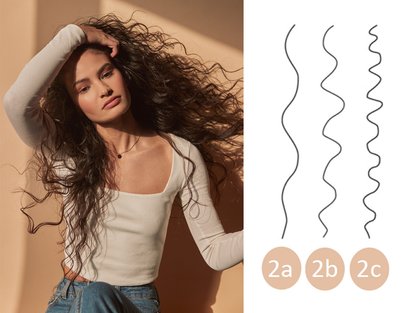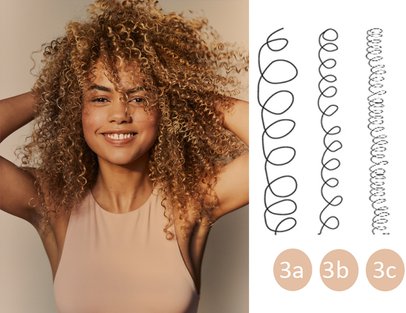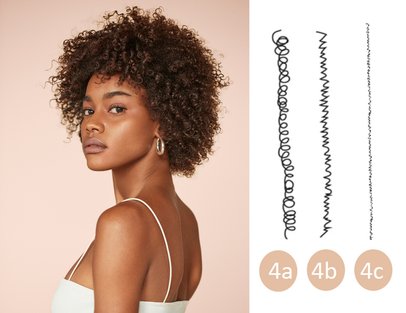What Type of Curls Do I Have?
A simple guide by Kérastase to help you recognize your curl type
Along with its care-first philosophy, Kérastase listens closely to the hair concerns of all individuals around the world and responds with the highest standards of customized care for all types and textures. Kérastase understands that while all hair is biologically the same, each type and texture of hair requires specific professional care.
From straight hair, to loose waves and tight coils, textures range beautifully from individual to individual.
Wavy, curly, very curly or coily: how to recognize all the curly hair types?

WAVY TO CURLY HAIR - TYPE 2
Wavy to curly hair takes on an S shape or winds around a spiral shape. Because the natural shape can easily be weighed down by heavy products, wavy to curly hair needs lightweight conditioner and defining care. Its loose curl shape does allow natural oils to travel down the shaft, so only a medium amount of extra moisture and nutrition is necessary.

VERY CURLY HAIR - TYPE 3
Very curly hair can come in the form of loose curls or tight, springy corkscrew curls with strands winding closely around themselves. The fiber tends to be more porous and fragile than wavy to curly hair. At the same time, because of the tighter curl shape, it’s more challenging for natural moisture to reach the ends, so very curly hair needs intense hydration and strengthening products such as a hair mask and layered-on leave-in treatments.

COILY HAIR - TYPE 4
Coily hair can come in tight corkscrews, or a zig-zag pattern. The curls are very dense near the scalp and loosen a bit toward the ends. The fiber is thinner and more fragile, with a higher risk of breakage. Because natural oils have a hard time traveling down the shaft, it is also extremely dry. Coily hair requires maximum nutrition, strength and definition that can be achieved with lots of layered products and intense treatment oils that can be left on overnight.
Where do curls come from?
Interview with Edine, Head Engineer for claims and product performance
All hair have a follicle and, a hair shaft made of a cuticle and a cortex, but there are major differences between these compartments that explain hair curvature. It is the shape of the follicle that actually drives the hair curvature. A straight bulb will generate a straight hair. A bean-shaped follicle will produce hair with a curl pattern. A straight bulb will generate a straight hair whereas a bean-shaped follicle will produce hair with a curl pattern.
And this is how curl is born!